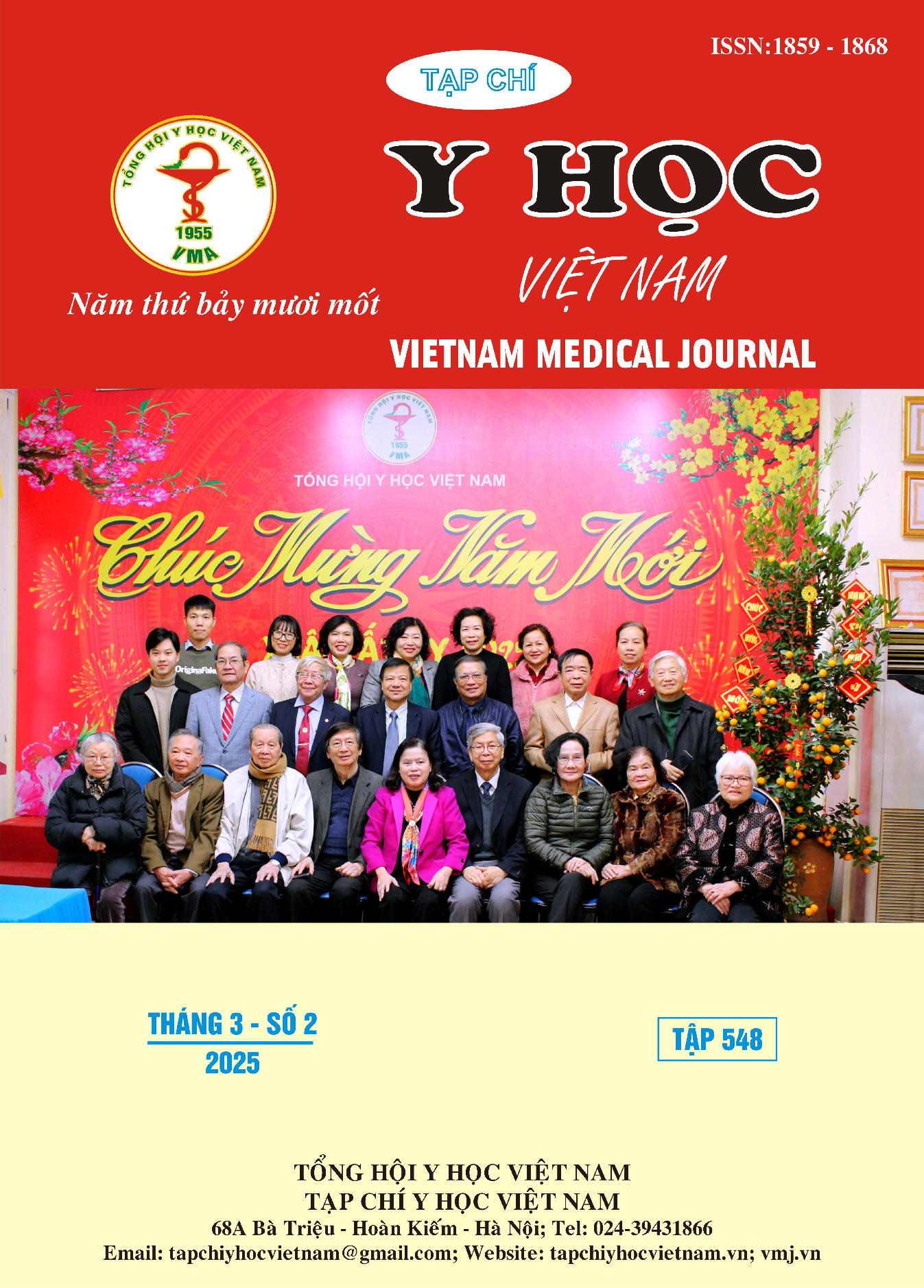THE CLINICAL AND PARACLINICAL CHARACTERISTICS OF CHILDREN WITH WHOOPING COUGH AT THE NATIONAL CHILDREN'S HOSPITAL
Main Article Content
Abstract
Objective: Describe the clinical and paraclinical characteristics of children with whooping cough at the National Children's Hospital. Subjects and methods: Children under 16 years old were diagnosed with whooping cough and treated at the National Children's Hospital. A prospective descriptive study of a series of cases was conducted from January 1, 2019 to December 31, 2020. Results: Common clinical characteristics in children with whooping cough include the triad: increasing cough (99.7%), paroxysmal cough (97.9%), increased sputum secretion after coughing (96.6%). 69.9% of children with the disease had symptoms of cyanosis, only 6.0% of children had wheezing. Some common complications are pneumonia (48.7%), respiratory failure (34.6%). Increased pulmonary artery pressure is a serious complication that can be life-threatening with an incidence of 9.7%. Children under 4 months often have symptoms of cyanosis, apnea, and complications of pneumonia and respiratory failure. WBC and lymphocytes increases gradually from the end of the first week, peaks in the second week, and decreases gradually from the third week of the disease. The main lesion on chest X-ray is the image of increased density of the bronchial branches next to the heart on both sides (58.1%). Conclusion: Whooping cough patients often present with increasing cough, cyanosis and respiratory arrest. Severe illness often leads to pneumonia, respiratory failure and death. Paraclinical signs include a gradual decrease in total leukocytes and lymphocytes, and lung lesions on X-rays.
Article Details
Keywords
Children, whooping cough, complications
References
2. Jackson D.W. and Rohani P. (2014). Perplexities of pertussis: recent global epidemiological trends and their potential causes. Epidemiology & Infection, 142(4), 672–684.
3. Melvin J.A., Scheller E.V., Miller J.F., et al. (2014). Bordetella pertussis pathogenesis: current and future challenges. Nat Rev Microbiol, 12(4), 274–288.
4. Kang L., Cui X., Fu J., et al. (2022). Clinical characteristics of 967 children with pertussis: a single-center analysis over an 8-year period in Beijing, China. Eur J Clin Microbiol Infect Dis, 41(1), 9–20.
5. Báo cáo tổng kết Tiêm chủng mở rộng năm 2018 - Viện Vệ sinh dịch tễ Trung ương.
6. Phạm Thái Sơn, Trần Ngọc Xuân, Phạm Thị Thuỳ Dung (2019). Đặc điểm dịch tễ học, lâm sàng, cận lâm sàng và điều trị ở bệnh nhi mắc ho gà nằm tại viện Nhi Đồng 2, thành phố Hồ Chí Minh năm 2018. Tạp chí Y học Dự phòng, 29(11), 69–76.
7. Đỗ Văn Đồng, Bùi Thị Huyền Diệu, Đặng Thị Bích Thúy (2021). Đặc điểm dịch tễ học bệnh ho gà ở trẻ em tại tỉnh Nam Định từ năm 2017 – 2020. Tạp chí Y học Dự phòng, 31(7), 18–24.
8. Cherry J.D., Tan T., Wirsing von König C.-H., et al. (2012). Clinical Definitions of Pertussis: Summary of a Global Pertussis Initiative Roundtable Meeting, February 2011. Clin Infect Dis, 54(12), 1756–1764.
9. Phadke V.K., McCracken J.P., Kriss J.L., et al. (2018). Clinical Characteristics of Hospitalized Infants With Laboratory-Confirmed Pertussis in Guatemala. J Pediatric Infect Dis Soc, 7(4), 310–316.
10. Namachivayam P., Shimizu K., and Butt W. (2007). Pertussis: severe clinical presentation in pediatric intensive care and its relation to outcome. Pediatr Crit Care Med, 8(3), 207–211.


